Sell Hypophosphorous Acid Cas 6303-21-5
Sell Hypophosphorous Acid Cas 6303-21-5
high purity Hypophosphorous acid 99% colourless liquid – ECHEMI
Hypophosphorous acid 99% colourless liquid. Chat now for more business. … Purchase Quantity Date Posted; Australia: Hot sale Hypophosphorous acid with fast delivery. 20 : May 30, 2023: Australia:

- CAS No.
- 6303-21-5
- Chemical Name:
- Hypophosphorous acid
- Synonyms
- PHOSPHINIC ACID;HYPOPHOSPHORUS ACID;HYPOPHOSPHORIC ACID;hypophosphorous;Hypophoaphoeous acid;Hypophosphorous acid 50%;Hypophosphorousacid,50%w/waq.soln.;Dihydroxyphosphine;Hypophosphite Acid;phosphinic acid 50%
- CBNumber:
- CB6130318
- Molecular Formula:
- HO2P
- Molecular Weight:
- 63.980501
- MDL Number:
- MFCD02183592
- MOL File:
- 6303-21-5.mol
- MSDS File:
- SDS
Toxicity
It is non-combustible. But when contacts with the hole H agent, it will cause fire. When meets oxidizing agent, violent reaction and combustion can proceed. When it is heated to high, it can decompose into highly toxic phosphine gas, or even explode. It is corrosive. Hypophosphorous acid is often added into soft drinks, and because it is not absorbed. So the risk is small, but particularly strong hypophosphite hurt gastrointestinal. Accidentally it splashes into the eyes or contacts skin, plenty of water is used to washed. Production operators should wear protective clothing and other protective clothing. Production equipment should be sealed, workshop should be ventilated well.
HAZARDS IDENTIFICATION
Hazard statement:
Causes severe skin burns and eye damage.
Causes serious eye damage
Precautionary statements:
Do not breathe dust/fume/gas/mist/vapors/spray.
Wash thoroughly after handling.
Wear protective gloves and eye/face protection.
IF SWALLOWED: Rinse mouth. Do NOT induce vomiting.
IF ON SKIN (or hair): Remove/Take off immediately all contaminated clothing. Rinse skin with water/shower.
IF IN EYES: Rinse cautiously with water for several minutes. Remove contact lenses, if
present and easy to do. Continue rinsing.
IF INHALED: Remove victim to fresh air and keep at rest in a position comfortable for breathing.
Immediately call a POISON CENTRE or doctor/physician.
Store locked up.
Dispose of this material and its container to hazardous or special waste collection point.
Preparation method
1. Phosphorus and barium hydroxide solution is heated, barium salt Ba (H2PO2) 2 • 2H2O can generate, sulfuric acid is added into hypophosphorous acid barium solution, Ba2+ can precipitate:
Ba(H2PO2)2+H2SO4=BaSO4+2H3PO2
Hypophosphorous acid can be obtained by evaporating under reduced pressure and low temperature crystallization. Due to in this process, the solubility of the barium salt is small, so the concentration of obtained Hypophosphorous acid is not high, industrial product should be purified by recrystallization.
2. the barium oxide (or lime) and solution of white phosphorus is heated together to form secondary barium phosphate (or calcium), and then reacts with sulfuric acid, it is filtered, concentrated to obtain product, or sodium hypophosphite solution proceeds H-type ion exchange resin can derive product. This method requires a large amount of resin, and resin regeneration and washing step is cumbersome, it generally costs more than $ 7 per pound, it is only suitable for small batch production, and not suitable for large-scale industrial applications.
3. Hypophosphorous acid is prepared by electrodialysis method, wherein the electrodialysis cell divides into three parts, they are anode chamber, raw material chamber and cathode chamber, the intermediate is separated by anionic membrane and cationic membrane, between two membranes sodium hypophosphite solution is placed (concentration of 100g/L~500g/L), anode chamber is dilute solution of Hypophosphorous acid 5g/L, anode chamber is dilute sodium hydroxide solution ( 5g /L), between the poles DC (3V~36V) is passed, anode releases oxygen, and generates secondary product of Hypophosphorous acid; cathode emits hydrogen, and generates secondary product of sodium hydroxide, the reaction time is 3~21h. The reactions of anode chamber and cathode chamber are as follows:
anode chamber:
H2O==H++OH-
2OH-==O2+2H2O+4e
H++H2PO2-==H3PO2
cathode chamber:
H2O==H++OH-
2H++2e==H2
Na++OH-==NaOH
Electrodialysis method of preparation Hypophosphorous acid is simple and equipment investment is small, it is suitable for mass production.
4. Starting from the industrial grade sodium hypophosphite, Cl-, SO42-anions which affect the quality indicators of Hypophosphorous acid are removed by precipitation, heavy metal ions are removed from the solution by forming sulfide, and then using strong acid cation exchange resin to obtain sodium secondary phosphate, high purity grade product can obtain. The process can produce high-grade secondary phosphate, technically is feasible, the process is simple, easy operation, good product quality, it can meet the needs of the electronics industry, defense industry and other high-tech fields.

figure 1 Production Process of Hypophosphorous Acid from Industrial Sodium Hypophosphite.
5. Ion exchange resin method: about 70g of cation exchange resin wetted with water is packed into a glass tube with 5 mol/L hydrochloric acid circulating about 15min, after thoroughly washed with water, high purity aqueous sodium hypophosphite aqueous solution (15 g/60 ml H2O) flows through it, the resin column is first washed with 50 ml, then with 25 rnl distilled water. The effluent acid and washing is combined, it is concentrated by evaporation in water bath. The concentrated acid is placed in high vacuum with P205 dryer for dehydration, cooling and crystallization, filtration, recrystallization, to obtain hypophosphorous acid product.
Production method
Ion exchange resin method: put about 70 g water-soluble cation exchange resins to fill into a glass tube. Circulate with 5 mol/L hydrochloric acid for about 15 min and wash sufficiently with water. Have a high aqueous sodium hypophosphite solution (15 g/60 ml H2O) to flow through the resin column, followed by being washed first with 50 ml water, and then rinsing with 25 rnl distilled water. The effluent acid and the washings were combined and concentrated by evaporation on a water bath. The concentrated acid is send to the highly vacuum, P205 dryer for dehydration, followed by cooling crystallization, filtration and recrystallization to obtain the finished product of hypophosphorous acid.
Description
Hypophosphorous acid is a powerful reducing agent with a molecular formula of H3PO2. Inorganic chemists refer to the free acid by this name although its IUPAC name is dihydridohydroxidooxidophosphorus, or the acceptable name of phosphinic acid. It is a colorless low-melting compound, which is soluble in water, dioxane, and alcohols. The formula for hypophosphorous acid is generally written H3PO2, but a more descriptive presentation is HOP(O)H2 which highlights its monoprotic character. Salts derived from this acid are called phosphinates (hypophosphites).
Description
This acid has the general formula ofH4P2O6 and differs from the other oxy-phosphorous acids. It has many peculiarities. It is formed along with phosphorous and phosphoric acids, when phosphorus is oxidized by moist air. If white phosphorus is exposed to air, and sodium acetate is addedto the liquidwhich forms, the somewhat insoluble sodium hypophosphate,Na2H2P2O6·6H2Oseparates. The sodium hypophosphate monohydrate, however, is very soluble and deliquescent at ~98.7 g/100 ml.
Chemical Properties
colourless liquid
Physical properties
Colorless deliquescent crystals or oily liquid; sour odor; density 1.493 g/cm3;melts at 26.5°C; boils at 130°C; very soluble in water, alcohol and ether; den-sity of a 50% aqueous solution is 1.13 g/mL.
Uses
Hypophosphorous acid is primarily used for electroless nickel plating. It is involved in the reduction of arenediazonium salts. It acts as an additive in Fischer esterification reactions. Also, it serves as a neutralizing agent, antioxidant, catalyst in polymerization and poly condensation, and wetting agent. Further, it is used in the formulation of pharmaceuticals, discoloration of polymers, water treatment and retrieval of precious or non-ferrous metals. In addition to this, it is used as bleaching agents for plastics, synthetic fibers, decolorizing agent and for color stabilization during the manufacture of chemicals and several plastics.
Preparation
Hypophosphorous acid may be prepared by various methods:
1. Boiling white phosphorus with calcium hydroxide:
P4 + 4Ca(OH)2 + 8H2O → 4Ca(H2PO2)2 + 4H2
The calcium salt is soluble in water. Treatment with sulfuric acid yields thehypophosphorous acid:
(H2PO2)2Ca + H2SO4 → 2H3PO2 + CaSO4
The product mixture is filtered to remove insoluble CaSO4. The aqueous solu-tion of hypophosphorous acid is concentrated under reduced pressure.Concentrated baryta water may be used instead of calcium hydroxide.2. By treating sodium hypophosphite, NaH2PO2with an ion-exchange resin.The sodium salt may be produced by boiling white phosphorus with a solutionof sodium hydroxide, a reaction similar to (1) above.
PH3 + 2I2 + 2H2O → H3PO2 + 4HI
The above method may be considered safer than that involving heating whitephosphorus with an alkali.
Hypophosphorous acid must be stored below 50°C. It is sold commerciallyas an aqueous solution at various concentrations.
Production Methods
Hypophosphorous acid is formed by reaction of barium hypophosphite and sulfuric acid, and filtering off barium sulfate. By evaporation of the solution in vacuum at 80 °C, and then cooling to 0°C, hypophosphorous acid crystallizes.
Definition
ChEBI: A phosphorus oxoacid that consists of a single pentavalent phosphorus covalently bound via single bonds to two hydrogens and a hydroxy group and via a double bond to an oxygen. The parent of the class of phosphinic acids.
Definition
A white crystalline solid. It is a monobasic acid forming the anion H2PO2 – in water. The sodium salt, and hence the acid, can be prepared by heating yellow phosphorus with sodium hydroxide solution. The free acid and its salts are powerful reducing agents.
Reactions
Hypophosphorous acid is miscible with water in all proportions and a commercial strength is 30% H3PO2. Hypophosphites are used in medicine. Hypophosphorous acid is a powerful reducing agent, e.g., with copper sulfate forms cuprous hydride Cu2H2, brown precipitate, which evolves hydrogen gas and leaves copper on warming; with silver nitrate yields finely divided silver; with sulfurous acid yields sulfur and some hydrogen sulfide; with sulfuric acid yields sulfurous acid, which reacts as above; forms manganous immediately with permanganate.
General Description
Hypophosphorous acid appears as colorless oily liquid or deliquescent crystals with a sour odor. Density 1.439 g / cm3. Melting point 26.5°C. Inhalation of vapors irritates or burns the respiratory tract. Liquid and vapors may irritate or burn eyes and skin.
Air & Water Reactions
Deliquescent. Water soluble.
Reactivity Profile
HYPOPHOSPHOROUS ACID decomposes when heated into phosphoric acid and spontaneously flammable phosphine. Is oxidized by sulfuric acid with release of sulfur dioxide and sulfur. Reacts explosively with mercury(II) oxide [Mellor, 1940, Vol. 4, 778]. Reacts violently with mercury(II) nitrate [Mellor, 1940, Vol. 4, 993]. Neutralizes bases in exothermic reactions.
Hazard
Fire and explosion risk in contact with oxidizing agents.
Health Hazard
TOXIC; inhalation, ingestion or skin contact with material may cause severe injury or death. Contact with molten substance may cause severe burns to skin and eyes. Avoid any skin contact. Effects of contact or inhalation may be delayed. Fire may produce irritating, corrosive and/or toxic gases. Runoff from fire control or dilution water may be corrosive and/or toxic and cause pollution.
Fire Hazard
Non-combustible, substance itself does not burn but may decompose upon heating to produce corrosive and/or toxic fumes. Some are oxidizers and may ignite combustibles (wood, paper, oil, clothing, etc.). Contact with metals may evolve flammable hydrogen gas. Containers may explode when heated.
Purification Methods
Phosphorous acid is a common contaminant of commercial 50% hypophosphorous acid. Jenkins and Jones [J Am Chem Soc 74 1353 1952] purified this material by evaporating about 600mL in a 1L flask at 40o, under reduced pressure (in N2), to a volume of about 300mL. After the solution was cooled, it was transferred to a wide-mouthed Erlenmeyer flask which was stoppered and left in a Dry-ice/acetone bath for several hours to freeze (if necessary, with scratching of the wall). When the flask was then left at ca 5o for 12hours, about 30-40% of it liquefied, and was again filtered. This process was repeated, then the solid was stored over Mg(ClO4)2 in a vacuum desiccator in the cold. Subsequent crystallisations from n-butanol by dissolving it at room temperature and then cooling in an ice-salt bath at -20o did not appear to purify it further. The free acid forms deliquescent crystals m 26.5o and is soluble in H2O and EtOH. The NaH2PO2 salt can be purified through an anion exchange resin [Klement Z Anorg Allgem Chem 260 267 1949.]
Overview
Hypophosphorous acid is a phosphorus oxoacid and a powerful reducing agent. Inorganic chemists refer to the free acid by this name (also as “HPA”) although its official IUPAC name is phosphinic acid. See Phosphinic acid. It is a colorless low-melting compound, which is soluble in water, dioxane, and alcohols. The formula for hypophosphorous acid is generally written H3PO2, but a more descriptive presentation is HOP(O)H2 which highlights its monoprotic character. Salts derived from this acid are called hypophosphites.
HOP(O)H2 exists in equilibrium with the minor tautomer HP(OH)2. Sometimes the minor tautomer is called hypophosphorous acid and the major tautomer is called phosphinic acid.
Preparation and availability
The acid is prepared industrially via a two step process. Hypophosphite salts of the alkali and alkaline earth metals result from treatment of white phosphorus with hot aqueous solution of the appropriate hydroxide, e.g. Ca(OH)2.
- P4 + 4OH− + 4H2O → 4H2PO2− + 2H2
The free acid may be prepared by the action of a strong acid on these hypophosphite salts.
- H2PO2− + H+ → H3PO2
Alternatively, H3PO2 arises by the oxidation of phosphine with iodine in water.
- PH3 + 2I2 + 2H2O → H3PO2 + 4I− + 4H+
HPA is usually supplied as a 50% aqueous solution.
Uses
Hypophosphorous acid is used in the formulation of pharmaceuticals, discoloration of polymers, water treatment, retrieval of precious or non-ferrous metals. Its main use is for electroless plating, i.e. deposition of metal films from solution. In organic chemistry, H3PO2 best known for their use in the reduction of arenediazonium salts, converting ArN2+ to Ar-H.[1][2] When diazotized in a concentrated solution of hypophosphorous acid, an amine substituent can be removed from arenes, selectively over alkyl amines.
DEA List I chemical status
Because hypophosphorous acid can reduce elemental iodine to form hydroiodic acid, which is a reagent effective for reducing ephedrine or pseudoephedrine to methamphetamine,[3] the United States Drug Enforcement Administration designated hypophosphorous acid (and its salts) as a List I precursor chemical effective November 16, 2001.[4] Accordingly, handlers of hypophosphorous acid or its salts in the United States are subject to stringent regulatory controls including registration, recordkeeping, reporting, and import/export requirements pursuant to the Controlled Substances Act and 21 CFR §§ 1309 and 1310.[4][5][6]
Inorganic and organic derivatives
Numerous derivatives are known in which the two hydrogen atoms directly bound to phosphorus are replaced by organic groups. These derivatives are known as phosphinic acids, and their salts as phosphinates. For example, formaldehyde and H3PO2 react to give (HOCH2)2PO2H. The reaction is akin to the addition of thiols and HCN to aldehydes. Similarly, it adds to Michael acceptors, for example with acrylamide it gives H(HO)P(O)CH2CH2C(O)NH2.
Few metal complexes have been prepared from H3PO2, one example is Ni(O2PH2)2.
Sources
- Cotton, F. Albert; Wilkinson, Geoffrey; Murillo, Carlos A.; Bochmann, Manfred (1999), “Advanced Inorganic Chemistry” (6th ed.), New York: Wiley-Interscience, ISBN 0-471-19957-5.
- ChemicalLand21 Listing
- D. E. C. Corbridge “Phosphorus: An Outline of its Chemistry, Biochemistry, and Technology” 5th Edition Elsevier: Amsterdam. ISBN 0-444-89307-5.
- V. V. Popik, A. G. Wright, T. A. Khan, J. A. Murphy “Hypophosphorous Acid” in Encyclopedia of Reagents for Organic Synthesis (Ed: L. Paquette) 2004, J. Wiley & Sons, New York. DOI: 10.1002/047084289.
References
- ↑ Robison, M. M.; Robison, B. L. (1956). “2,4,6-Tribromobenzoic acid“. Org. Synth. 36:94; Coll. Vol. 4:947.
- ↑ Kornblum, N. (1941). “3,3′-Dimethoxybiphenyl and 3,3′-dimethylbiphenyl“. Org. Synth. 21:30; Coll. Vol. 3:295.
- ↑ Gordon, P.E.; Fry, A.J.; Hicks, L.D. Further studies on the reduction of benzylic alcohols by hypophosphorous acid/iodine. 23 August 2005. ARKIVOC 2005 (vi) 393-400. ISSN 1424-6376.
- ↑ Jump up to:4.0 4.1 66 FR 52670—52675. 17 October 2001.
- ↑ 21 CFR 1309
- ↑ 21 USC, Chapter 13 (Controlled Substances Act)
de:Phosphinsäure it:Acido ipofosforoso
Hypophosphorous acid 50% for analysis EMSURE® | Sigma-Aldrich
WebHypophosphorous acid 50% for analysis EMSURE®; Synonyms: Hypophosphorous acid; find Supelco-104633 MSDS, related peer-reviewed papers, technical documents, …
-
Hypophosphorous acid 50% | Solvay
WebHypophosphorous acid 50%. Ask for inquiry. Order a sample. Hypophosphorous acid is used as a chain transfer agent in aqueous polymerizations.
-
Hypophosphorous acid-d3 50wt. D2O, D 98atom 57583-56-9
WebHypophosphorous acid-d3 solution | Suitable for NMR | The product is 50wt | Buy chemicals and reagents online from Sigma Aldrich
-
Buy Hypophosphorous Acid 6303-21-5 by Wegochem Europe …
WebHypophosphorous Acid 6303-21-5 by Wegochem Europe B.V. in large quantities on CheMondis, the trusted chemical B2B online marketplace. … Request a one time …
-
Hypophosphorous acid 50% | 104633 – Merck
WebPhosphorous acid and phosphoric acid (as H₃PO₃) ≤ 2: Chloride (Cl) ≤ 0.015 %: Total sulfur (as SO₄) ≤ 0.02 %: As (Arsenic) ≤ 0.0005 %: Ba (Barium) ≤ 0.005 %: Ca (Calcium) …
-
Hypophosphorous acid price,buy Hypophosphorous acid
WebHypophosphorous acid 50% : 2.5kg: $224.33: 2021-12-16: Buy: Sigma-Aldrich 1.04633: Hypophosphorous acid 50% for analysis EMSURE? 500mL:
-
Hypophosphorous acid solution 5.0 (1) 1 of 1 reviewers received a sample product or took part in a promotion Write a review 50 wt. % in H2O Synonym (s): Phosphinic acid Linear …
-
Hypophosphorous acid ( HPA ), or phosphinic acid, is a phosphorus oxyacid and a powerful reducing agent with molecular formula H 3 PO 2. It is a colorless low-melting
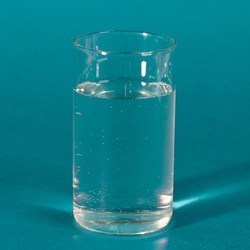

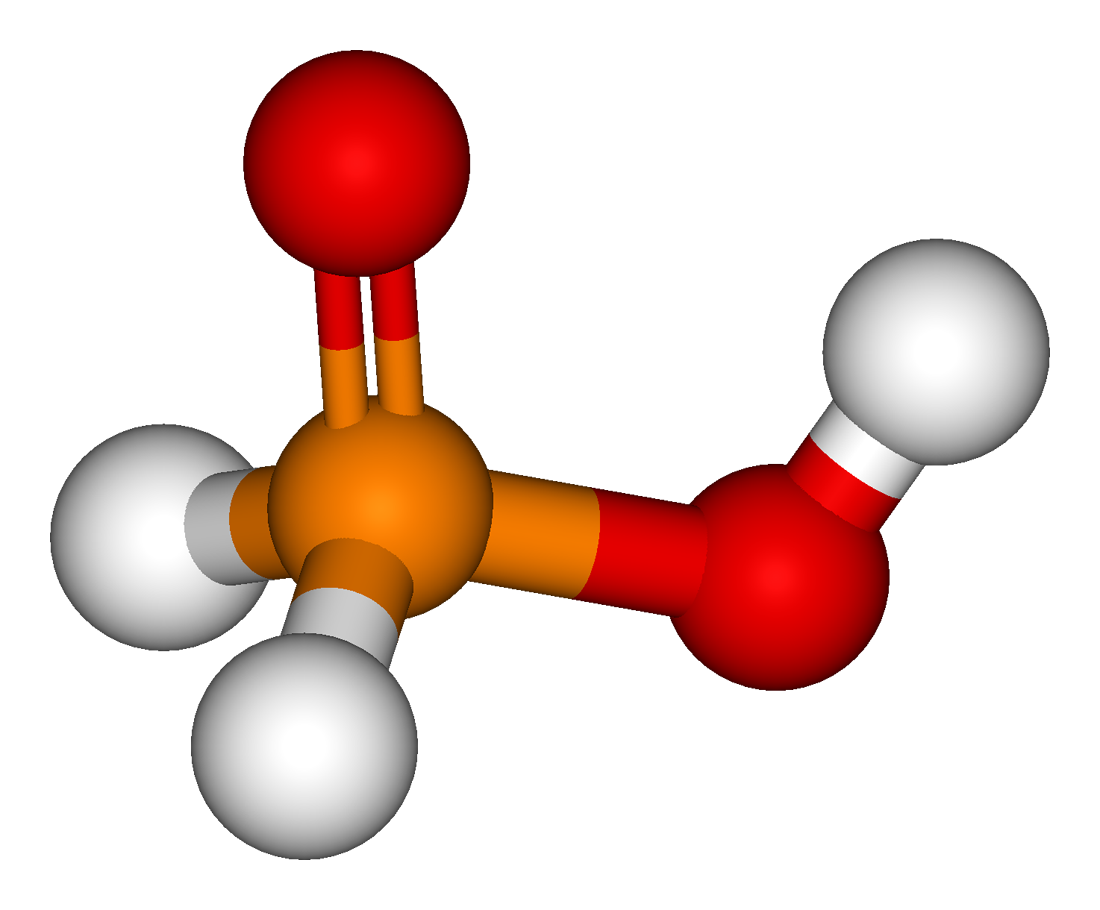
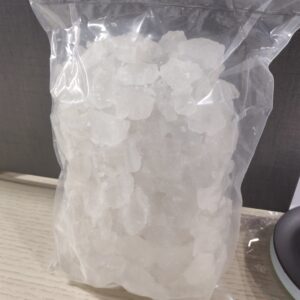
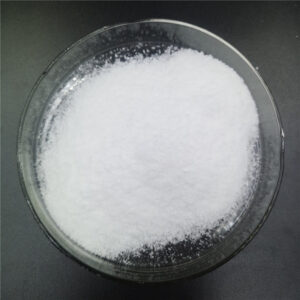
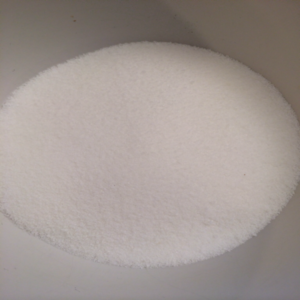
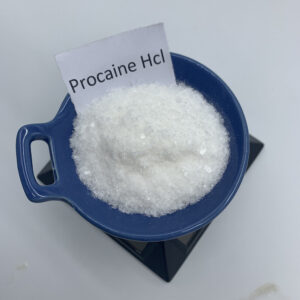
Reviews
There are no reviews yet.